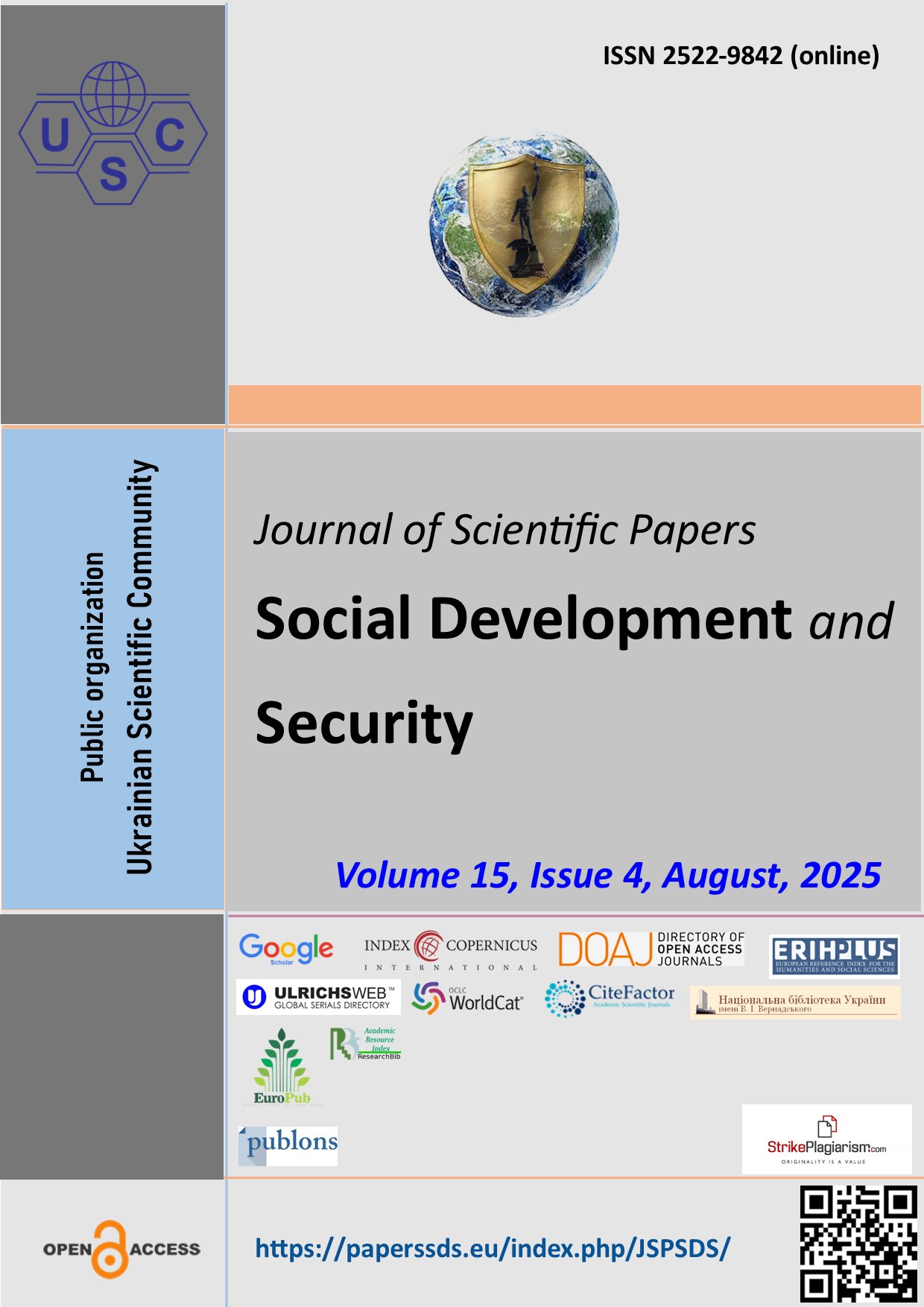Forming a Regulatory Model of the Life Cycle for Military Ground Robotic Systems
Abstract
Purpose. To substantiate approaches to the development of a regulatory life cycle model for military ground robotic systems, taking into account their technological and functional specificities, as well as to analyze the limitations of current regulatory documents on life cycle management of weapons and military equipment.
Method. The study applies a systems analysis of national regulatory standards in the field of weapons and military equipment, along with a comparative analysis of commonly used life cycle models.
Findings. An adapted regulatory life cycle model for military ground robotic systems is developed. The model accounts for the need for rapid modernization cycles, configuration management features, software support, and operation under dynamic tactical conditions.
Theoretical implications. The research expands the theoretical framework for regulatory control of the life cycle of advanced military systems and contributes to the development of national standards tailored to new classes of combat platforms.
Practical implications. The proposed model can be used in the development of technical requirements, testing programs, life cycle documentation, and regulatory acts governing the adoption and logistical support of military ground robotic systems.
Originality. Originality lies in the integration of traditional regulatory approaches with agile life cycle management principles for cyber-physical systems, and in the structural separation of hardware and software life cycles within a unified model.
Paper type. Analytical and research article.
Downloads
References
DSTU V 15.003:2021 Life cycle management system for weapons and military equipment. Life cycle processes for weapons and military equipment. Valid from 01.09.2022. “UkrNDNC”, 2021.
DSTU V 15.004:2022. System for the development and commissioning of weapons and military equipment. Stages of the life cycle of weapons and military equipment. Valid from 01.10.2023. “UkrNDNC”, 2022.
Ivan Kyrychenko. Ground robotic complexes: basics and future. Young Scientist, No. 12 (100), 2021, pp. 16-20. https://doi.org/10.32839/2304-5809/2021-12-100-4.
Zalypka, V.D. Features of the creation and application of ground robotic complexes in leading countries of the world and Ukraine. Scientific Bulletin of the National Technical University of Ukraine, No. 32 (4), 2022, pp. 60-65. https://doi.org/10.36930/40320410.
Strutynskyi, V.B., Gurzhii, A.M. Ground robotic complexes: monograph. PP “Ruta”, Zhytomyr, 2023, 497 p.
Alyokhina, S., Nevliudov, I., Romashov, Yu. Computer simulations of controllability processes for robotic wheeled platforms taking into account restrictions of jerk motions. Current status of scientific research and technologies in industry. No. 1 (19), 2022, pp. 65-75. DOI: https://doi.org/10.30837/ITSSI.2022.19.065.
Mohor, V.V., Bakalynsky, O.O., Dorogy, Ya.Yu., Tsurkan, V.V. Life cycle of information security management systems. Abstracts of the XXIII International Scientific and Technical Conference “Problems of Informatics and Modeling (PIM-2023)”. Kharkiv, September 20-22, 2023, NTU “KhPI”, p.16. https://doi.org/10.5281/zenodo.14601460.
Sun Cong, Ma Jianfeng, Yao Qingsong. On the architecture and development life cycle of secure cyber-physical systems. Journal of Communications and Information Networks. № 1 (4), 2016, р. 1-21. DOI: https://doi.org/10.11959/j.issn.2096-1081.2016.041.
Ashraf Tantawy, Sherif Abdelwahed, Abdelkarim Erradi. Cyber LOPA: An integrated approach for the design of dependable and secure cyber-physical systems. IEEE Transaction on Reliability. Vol. 71, № 2, 2022, p. 1075-1091. DOI: https://doi.org/10.1109/TR.2022.3163652.
Mustafa Abshir Mohamed, Geylani Kardas, Moharram Challenger. A systematic literature review on model-driven engineering for cyber-physical systems: Technical report. Cornell University, Ithaca, NY, USA, 2021, 90 p. https://doi.org/10.48550/arXiv.2103.08644.
Abstract views: 98 PDF Downloads: 30
Copyright (c) 2025 Andrii Diadechko, Vitalii Zuiko

This work is licensed under a Creative Commons Attribution 4.0 International License.
The authors agree with the following conditions:
1. Authors retain copyright and grant the journal right of first publication (Download agreement) with the work simultaneously licensed under a Creative Commons Attribution License that allows others to share the work with an acknowledgment of the work's authorship and initial publication in this journal.
2. Authors have the right to complete individual additional agreements for the non-exclusive spreading of the journal’s published version of the work (for example, to post work in the electronic repository of the institution or to publish it as part of a monograph), with the reference to the first publication of the work in this journal.
3. Journal’s politics allows and encourages the placement on the Internet (for example, in the repositories of institutions, personal websites, SSRN, ResearchGate, MPRA, SSOAR, etc.) manuscript of the work by the authors, before and during the process of viewing it by this journal, because it can lead to a productive research discussion and positively affect the efficiency and dynamics of citing the published work (see The Effect of Open Access).
















